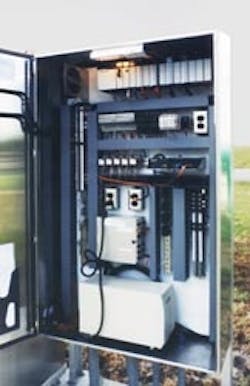Different Source, Different Treatment
In order to handle substantial growth, the Bonita Springs Utilities, Inc. (BSU), a not-for-profit, member-owned utility in Bonita Springs, Fla., had to turn to a new source of water, which forced implementation of a new technology.
Water demand had grown from 4.2 mgd in 1995 to 7 mgd in 2000, with 12.6 mgd projected for 2005. Satisfying this demand required an alternative water source to supplement the existing well fields in the Tamiami Aquifer.
Ongoing efforts to restore water levels in the Everglades are emphasizing that municipalities switch to brackish water supplies rather than expand freshwater well fields.
To comply with these efforts, BSU elected to meet this growth with water from the Upper Floridan aquifer system, an 800 ft deep source that does not impact the Everglades. This new source has different characteristics than the existing freshwater aquifer, with increased saline level is the most notable. To handle this brackish water source, BSU turned to reverse osmosis (RO) technology to treat this new water source.
Implementing RO
BSU serves an area of about 60 square miles, containing approximately 20,000 homes and businesses. The existing water treatment plant provides lime softening treatment for a maximum of 8 mgd and remains in operation. The new RO plant was designed for an additional capacity of 12 mgd.
A pretreatment stage adjusts pH and salt solubility and filters suspended solids. In the separation stage, RO technology uses a combination of pressure differentials and semi permeable membranes to extract good water from the salty water. The input pressure is 230 psi. The good water exiting the membranes is at 15 psi, and the system has achieved a recovery rate of about 80%.
The good water then goes to a degasifer and odor scrubber before moving on to a clear well holding tank and transfer pumps. Next is the addition of post treatment chemicals, such as chlorine, that made the water ready for distribution. Bad water (the salt water rejected from the RO process) is sent to a deep injection well 3,200 ft below ground to a depth where native water is saltier than the RO reject water.
The control system is extensive and it includes a well master that communicates with seven wells; a membrane train master controls four membrane trains, three chemical feed systems, a degasifier and odor control system; a storm water pump station, as well as an injection and monitoring well system; and a high-service pump master controls the high-service pump drives.
When the circumstances required brackish sources, BSU found reverse osmosis to be a cost effective technology to treat that brackish raw water.
